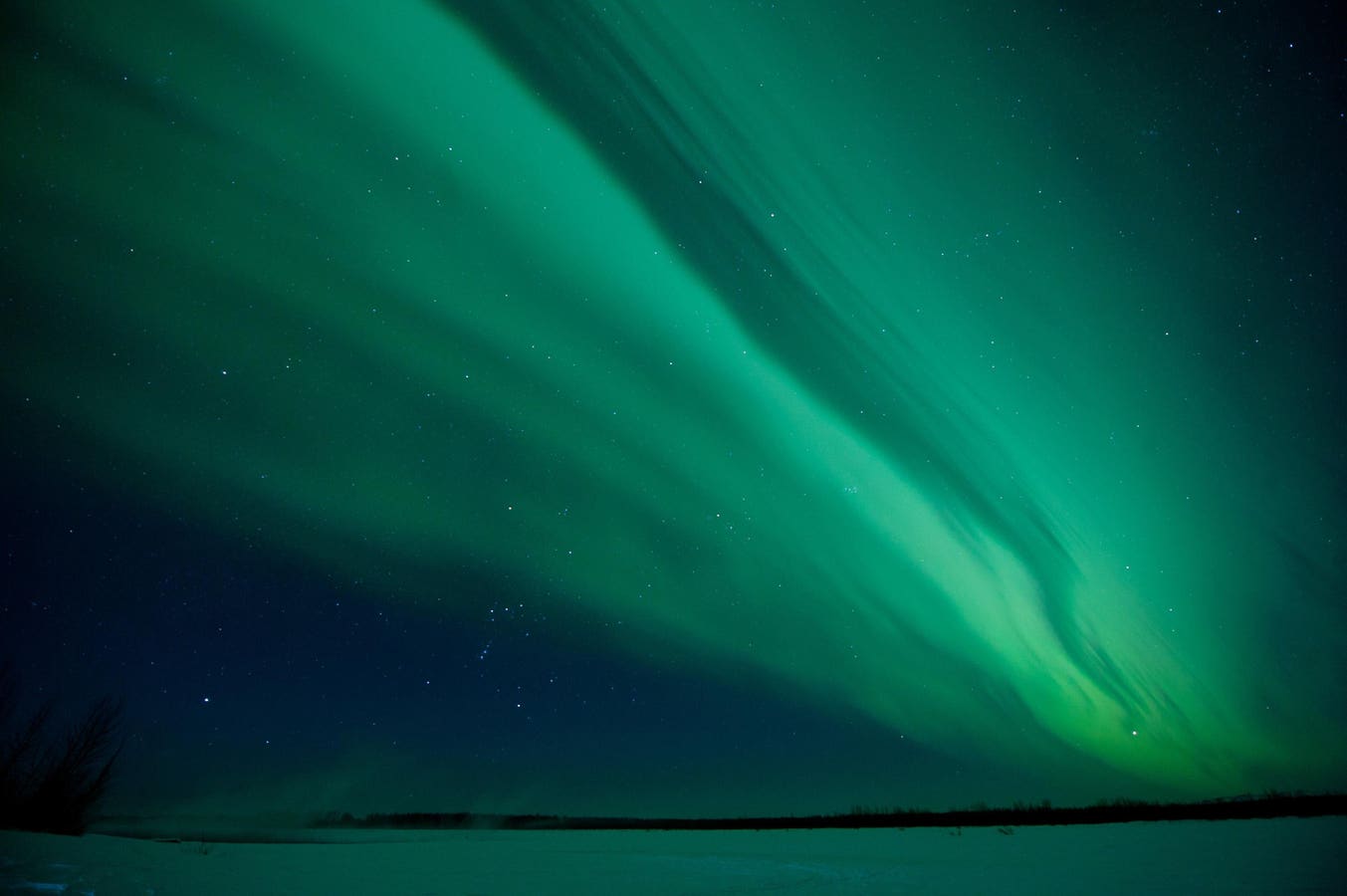Topline
States along the Canadian border may have an opportunity to see the northern lights again on Tuesday night, after recent geomagnetic storms pulled the phenomenon farther south, according to the National Oceanic and Atmospheric Administration.
Some states near the Canadian border may see the phenomenon, forecasters said.
Key Facts
Auroral activity is forecast with a Kp index of four on a scale of nine for Tuesday night, suggesting the northern lights could be visible in as many as 10 states and be “quite pleasing to look at” for those in the right areas, NOAA said.
No geomagnetic storm conditions are expected Tuesday, after a series of minor to moderate storms pulled the northern lights to more states on Monday, according to NOAA’s three-day forecast.
Similar auroral activity is expected on Wednesday and Thursday, with a maximum Kp index of four forecast for each day, NOAA’s projections suggest.
Get Forbes Breaking News Text Alerts: We’re launching text message alerts so you’ll always know the biggest stories shaping the day’s headlines. Text “Alerts” to (201) 335-0739 or sign up here.
Where Will The Northern Lights Be Visible?
Northern Alaska and Canada have the best chance of seeing the northern lights, while a view line marking a minimal opportunity to view the phenomenon dips just north of Iowa. Parts of northeastern Washington, northern Idaho, Montana, North Dakota, Minnesota and Upper Michigan have a lower likelihood, while areas in South Dakota, Wisconsin and Maine have an even lower chance. (See map below.)
What’s The Best Way To See The Northern Lights?
The northern lights are best seen between 10 p.m. and 2 a.m. local time, and NOAA recommends traveling to a north-facing, high vantage point away from light pollution.
What’s The Best Way To Photograph The Northern Lights?
Photography experts told National Geographic a wide-angle lens, F-stop or aperture of four or less and a focus set to the furthest possible setting are best for capturing the northern lights. If using a smartphone, NOAA recommends turning on night mode and disabling flash.
Key Background
A peak in northern lights displays was reached in October 2024, after NASA said activity on the sun’s surface had reached a “solar maximum.” This peak, indicating an increase in solar events like solar flares and coronal mass ejections, will likely persist into early 2026, according to scientists from NASA and NOAA. Electrons from these events are responsible for the northern lights displays, as their interaction with molecules of oxygen and nitrogen in the Earth’s atmosphere causes them to become “excited” before releasing the colorful displays of the aurora borealis. The strongest geomagnetic storm in two decades impacted Earth in May 2024, NASA said, as the event pulled the northern lights as far south as northern Florida and Texas.










